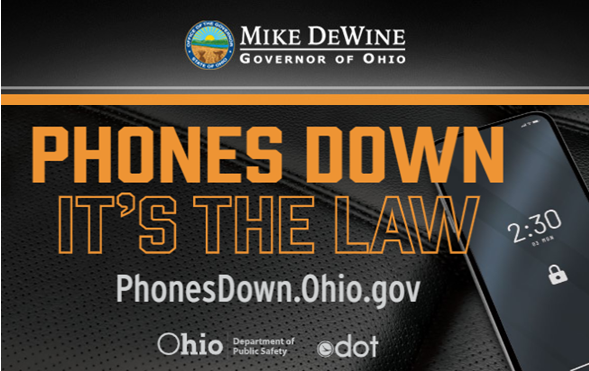End of Daylight Saving Time Means Increased Driver Danger
Written by WKTN Staff on November 3, 2022

COLUMBUS, Ohio – With Daylight Saving Time coming to an end this weekend, Ohioans will be spending more time driving in the dark.
AAA encourages motorists to take steps to avoid drowsy driving and improve visibility.
“While the time change brings an initial hour of extra sleep, the change in sleep patterns can lead to drowsy driving,” said Kellie O’Riordan, driver education programs manager for AAA Ohio Auto Club. “In addition, night driving brings challenges. We urge motorists to slow down, increase their following distance, use headlights to make yourself more visible, and be extra cautious on our roadways.”
Prevent Drowsy Driving:
The AAA Foundation for Traffic Safety finds that 16-21% of fatal crashes likely involve drowsy driving. The AAA Foundation for Traffic Safety has also found:
.Drivers who have slept less than five hours have a crash risk comparable to someone driving drunk.
.Missing 2-3 hours of sleep in a 24-hour period more than quadruple the risk of a drowsy driving crash.
AAA Driver Education instructors say drowsy driving is especially a concern for new drives, who may not get enough sleep at night.
“Families with novice drivers in the home need to be extra cautious with the early morning school commutes,” said O’Riordan. “Fatigue can greatly impair vision, so it’s essential that teens are fully awake before driving,”
All drivers can help prevent drowsy driving by:
.Getting at least seven hours of sleep before a long drive.
.Traveling at times of the day when they are normally awake.
.Avoiding heavy foods before driving.
.Avoiding medications that cause drowsiness or other impairment. Ask a doctor or pharmacist if unsure whether a medication falls in this category.
To help raise awareness and prevent drowsy driving, the National Sleep Foundation holds Drowsy Driving Prevention Week the week after Daylight Saving Time ends. This year, it falls on Nov. 6-13. Additional information can be found at Drowsy Driving Prevention Week® – National Sleep Foundation (thensf.org).
Focus on Visibility:
Dark conditions can make it harder to see when driving, and a lack of visibility can make for unsafe driving conditions. Vehicle headlights can start showing signs of deterioration after just three years. Aged headlights reduce light output by more than 80%, which can make it difficult to see an animal or object in front of your car until it’s too late.
As Ohioans do more driving in the dark, AAA recommends:
.Check your headlights. Make sure your headlights are in working order and check for signs of discoloration, such as yellowed or cloudy appearance. If it’s difficult to see the bulb through the lens, have the headlights replaced or restored as soon as possible. Both professional and DIY restoration can restore light output back to about 70%. For more information, visit the AAA Newsroom.
.Slow down and increase following distance to four seconds or more to compensate for reduced visibility.
.Scan the road ahead. Watch for sudden flashes of light at hilltops, around curves, or at intersections, because these may indicate the presence of oncoming vehicles.
.Use high beams when you can, but make sure to turn them off when other cars or pedestrians are around. If the driver of an oncoming vehicle fails to dim the lights, look down toward the right side of the road, and stay the course until the vehicle passes.
.Look out for pedestrians. Most fatal pedestrian crashes happen after dark, according to the AAA Foundation for Traffic Safety. Pedestrians should wear bright colors or reflective clothing, cross only at intersections and walk facing traffic on roads without sidewalks. Bicycle lights are a “must have” item for safe night riding.
Changes in eyesight can also contribute to increased risks when driving in the dark. Research shows senior drivers need significantly more light to see than younger drivers.
“As we age, our pupils get smaller and don’t dilate as much in dark conditions, making it more difficult to see at night,” said O’Riordan. “By age 60, eyes need three times as much light to see as they did at age 20. That means drivers with certain vision problems that may affect driving, as well as senior drivers, should take extra care when driving after dark.”
Those with concerns about their vision should consult an eye professional. Wear glasses if necessary and consider anti-glare coating for the lenses. Many people need glasses for night driving only, so don’t be reluctant to look into this option. Others need to minimize or avoid driving at night altogether.





